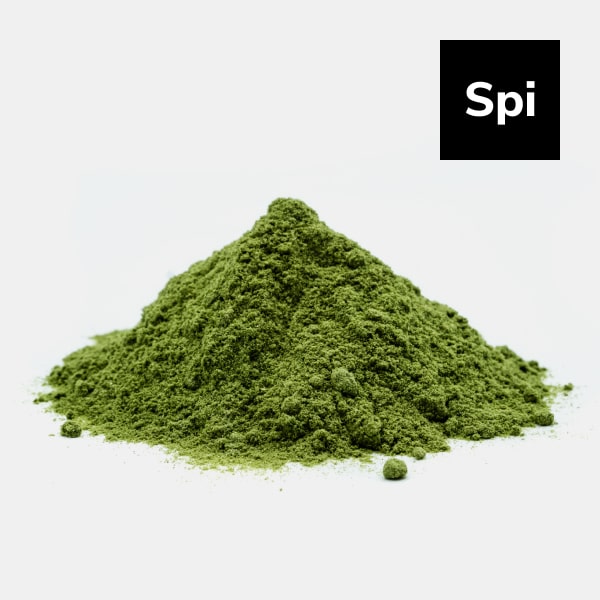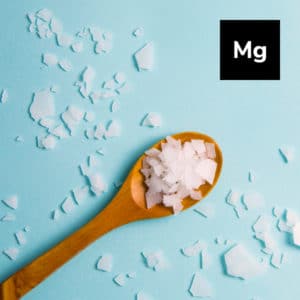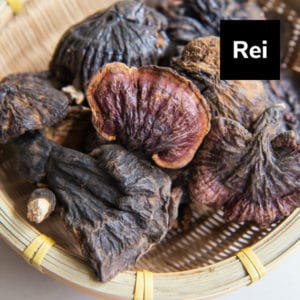Overview
Spirulina is an algae that grows in both fresh and saltwater. It is a cyanobacterium, which is a family of single-celled microbes. Because of its color, it is referred to as blue-green algae.
Spirulina products are widely promoted for their high nutrient content and pleasant taste. They are eco-friendly and contain numerous functional compounds, including vitamins, minerals, essential fatty acids, and amino acids, all of which are vital to overall health and well-being.
Spirulina is used in the food and beverage sector because of its high content of natural pigments. Its blue color is combined with other colors to obtain customized colors, such as lavender, violet, and green.
Spirulina also finds its major application in the cosmetic and personal care industry. It is mainly used in cosmetic and personal care products, especially anti-aging products.
Key Benefits
- Provides anti-aging benefits
- Provides significant antioxidant, anti-inflammatory, and immune response benefits
- May help prevent liver damage caused by anti-tuberculosis treatments*
- Improves blood lipids
- Helps support healthy body weight when combined with exercise program
- Improves blood pressure and endothelial function
- Provides all the amino acids, protein, and numerous vitamins and minerals, and is a good source of beta-carotene, iron, calcium, and phosphorus.
- Supports cardiovascular health
History of Usage
Spirulina is said to have been eaten by the ancient Aztecs. The utilization of algae, particularly spirulina, as a functional food was suggested decades ago due to the fact that it is not only a protein-dense food source but its amino acid profile is considered as of high biologic-value protein content. It became popular when NASA suggested that it could be grown in space as food for astronauts.*
Spirulina has not exhibited acute or chronic toxicities, making it safe for human consumption
The Dietary Supplements Information Expert Committee assigned a Class A safety rating for spirulina in 2011.
Biochemistry
Spirulina contains functional compounds, such as phenolics, phycocyanins, and polysaccharides, with antioxidant, anti-inflammatory, and immuno-stimulating effects. In addition, Spirulina processing products are employed in agriculture, the food industry, pharmaceutics, perfumery, and medicine.
The use of spirulina in food can bring benefits to human health owing to its chemical composition since it has high levels of vitamins, minerals, phenolics, essential fatty acids, amino acids, and pigments.
Spirulina activates cellular antioxidant enzymes, inhibits lipid peroxidation and DNA damage, scavenges free radicals, and increases the activity of superoxide dismutase and catalase.
Clinical trials show that Spirulina prevents skeletal muscle damage under conditions of exercise-induced oxidative stress and can stimulate the production of antibodies and up-or down-regulate the expression of cytokine-encoding genes to induce immunomodulatory and anti-inflammatory responses.
The molecular mechanism(s) by which Spirulina induces these activities is unclear, but phycocyanin and β-carotene are important molecules. Moreover, Spirulina effectively regulates the ERK1/2, JNK, p38, and IκB pathways.
Recent Trends
In 1998, researchers at the University of Buenos Aires discovered that spirulina promotes various species of lactic acid bacteria in pH levels, ranging from 5.3 to 7.0. In 2011, Polish researchers confirmed that spirulina increased lactobacilli viability, specifically with L. rhamnosus. Today, spirulina is being touted as a green powder synbiotic that consumers can use to supplement their prebiotic needs.
Spirulina is also used in the food and beverage sector because of its high content of natural pigments. Its blue color is combined with other colors to obtain customized colors such as lavender, violet, and green. Spirulina also finds its major application in the cosmetic and personal care industry. It is mainly used in cosmetic and personal care products, especially anti-aging products.
The global spirulina market was valued at $393.6 million in 2019, and is projected to reach $897.61 million by 2027, registering a CAGR of 10.5% from 2020 to 2027.
Precautions
Pregnant and breastfeeding women should consult with their health practitioner before use.
References
- *Mahasin G. Tadros. Characterization of Spirulina Biomass for CELSS Diet Potential. Alabama A&M University. Oct. 1988. https://ntrs.nasa.gov/api/citations/19890016190/downloads/19890016190.pdf
- *Martin SJ, Sabina EP. Amelioration of anti-tuberculosis drug induced oxidative stress in kidneys by Spirulina fusiformis in a rat model. Ren Fail. 2016 Aug;38(7):1115-21. doi: 10.1080/0886022X.2016.1184940. Epub 2016 May 17. PMID: 27183989.
- DiNicolantonio JJ, Bhat AG, OKeefe J. Effects of spirulina on weight loss and blood lipids: a review. Open Heart. 2020 Mar 8;7(1):e001003. doi: 10.1136/openhrt-2018-001003. PMID: 32201580; PMCID: PMC7061888.
- Miczke A, Szulińska M, Hansdorfer-Korzon R, Kręgielska-Narożna M, Suliburska J, Walkowiak J, Bogdański P. Effects of spirulina consumption on body weight, blood pressure, and endothelial function in overweight hypertensive Caucasians: a double-blind, placebo-controlled, randomized trial. Eur Rev Med Pharmacol Sci. 2016;20(1):150-6. PMID: 26813468.
- Gutiérrez-Salmeán G, Fabila-Castillo L, Chamorro-Cevallos G. NUTRITIONAL AND TOXICOLOGICAL ASPECTS OF SPIRULINA (ARTHROSPIRA). Nutr Hosp. 2015 Jul 1;32(1):34-40. doi: 10.3305/nh.2015.32.1.9001. PMID: 26262693.
- Marles RJ, Barrett ML, Barnes J, Chavez ML, Gardiner P, Ko R, Mahady GB, Low Dog T, Sarma ND, Giancaspro GI, Sharaf M, Griffiths J. United States pharmacopeia safety evaluation of spirulina. Crit Rev Food Sci Nutr. 2011 Aug;51(7):593-604. doi: 10.1080/10408391003721719. PMID: 21793723.
- Wu Q, Liu L, Miron A, Klímová B, Wan D, Kuča K. The antioxidant, immunomodulatory, and anti-inflammatory activities of Spirulina: an overview. Arch Toxicol. 2016 Aug;90(8):1817-40. doi: 10.1007/s00204-016-1744-5. Epub 2016 Jun 3. PMID: 27259333.
- Hernández-Lepe MA, López-Díaz JA, Juárez-Oropeza MA, Hernández-Torres RP, Wall-Medrano A, Ramos-Jiménez A. Effect of Arthrospira (Spirulina) maxima Supplementation and a Systematic Physical Exercise Program on the Body Composition and Cardiorespiratory Fitness of Overweight or Obese Subjects: A Double-Blind, Randomized, and Crossover Controlled Trial. Mar Drugs. 2018 Oct 1;16(10):364. doi: 10.3390/md16100364. PMID: 30275428; PMCID: PMC6213464.




